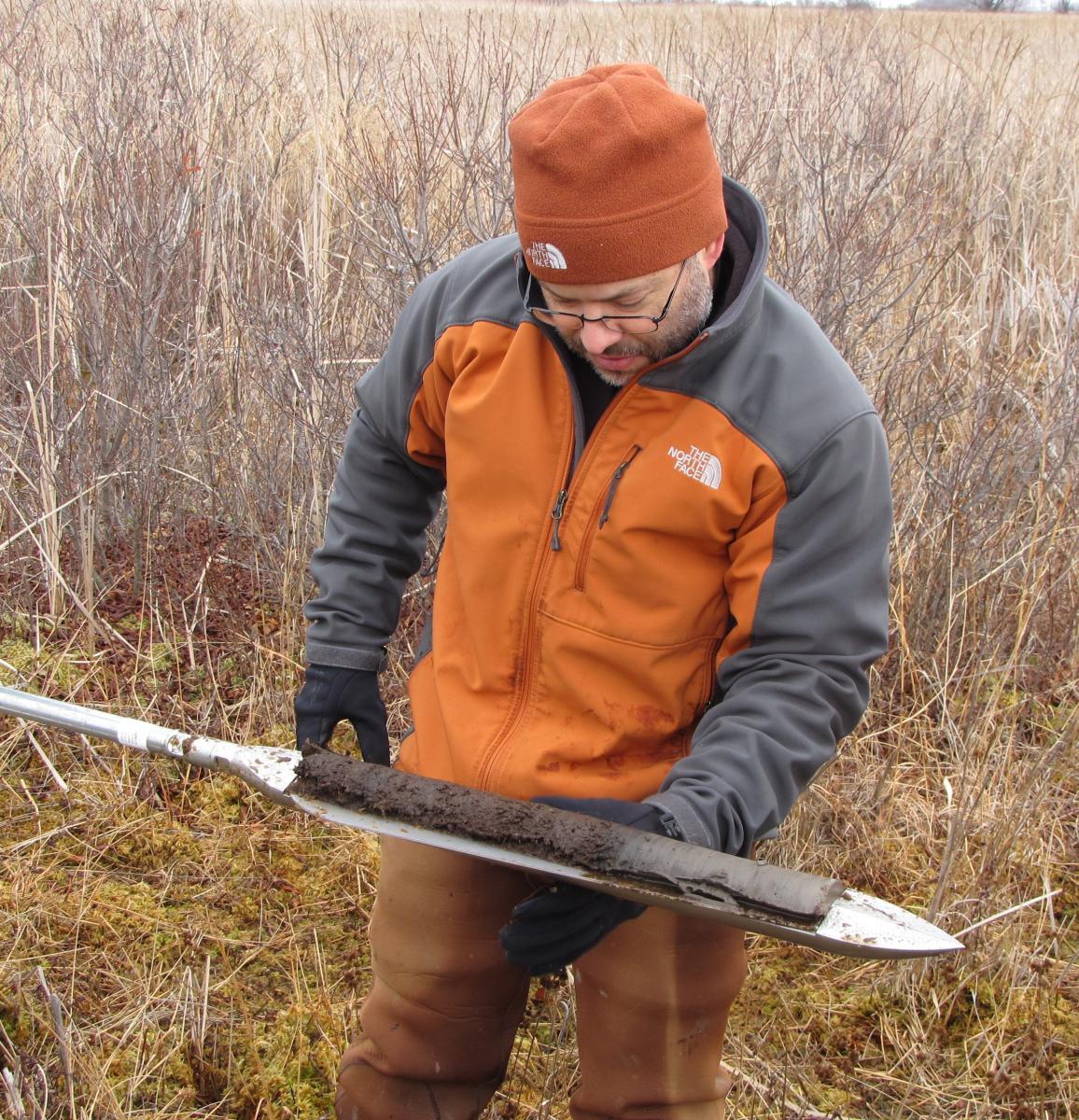
Department Chair, robert.booth@lehigh.edu
610-758-6580
244, 109B STEPS
Research Interests:
- Ecology
- Paleoecology
Education:
PhD (2003), Botany, University of Wyoming
MS (1998), Biology, Georgia Southern University
BS (1995), Biology, The Pennsylvania State University
Courses:
Conservation & Biodiversity (EES 28), Ecology (EES 152), Wetland Ecology (EES 386), Reconstructing Environmental Change (EES 459), Advanced Topics in Paleoecology (EES 497)
Research interests
Understanding and anticipating ecological responses to environmental changes, including climate variability, altered disturbance regimes, and changes in land use, is a pressing and critical challenge for ecologists and earth-system scientists. As a broadly trained ecologist interested in the effects of environmental variability on the structure and function of communities and ecosystems, much of my research program has been focused on meeting this critical challenge. Our research group exploits the “natural experiments” of the past to better understand the causes and consequences of environmental change and variability. The primary source of information that we use for these investigations is the paleoecological record derived from peatlands and lakes, although when possible we couple these studies with investigations of contemporary and historical ecology in an effort to better interpret past changes and bridge the gap in our understanding between long-term (i.e., millennial) and short-term (i.e., subdecadal) ecological processes. We have also pioneered the development of an important and increasingly applied tool in studies of global change – the use of testate amoebae in ecological and paleoenvironmental studies. Recent and ongoing research projects are aimed at better understanding the ecology and biogeography of testate amoebae in an effort to refine and extend the use of these organisms in answering global-change questions.

Teaching philosophy
My teaching philosophy is based on six general ideas. First, because learning is facilitated by experience and engagement, I provide a range of learning avenues by employing a variety of methods (e.g., collaborative and group learning activities, case studies, problem and inquiry-based learning, discussions, social media, and traditional lectures). Second, I strongly believe that teaching in the earth and environmental sciences should provide students with an understanding of how science is actually practiced and provide them with applied skills. I am convinced that the best way to do this is to give them experience actually doing science, and this often means getting the students into the field to observe, question, and develop/test hypotheses first-hand. My own experience in a field botany course was what convinced me that I wanted to be a field-based research scientist. Third, my primary goal as a teacher is not just to convey the essential subject matter, but also to promote the development of critical thinking and communication skills. Effective communication and critical thinking, particularly the ability to evaluate evidence and competing hypotheses, are essential tools in all career paths. Fourth, I strive to incorporate interdisciplinary training into my classes whenever possible. Scientists that are capable of working and thinking across disciplinary boundaries are increasingly needed in both scientific and societal contexts. Fifth, I continually strive to foster an inclusive environment in the classroom, where students from diverse backgrounds and differing personalities feel comfortable contributing to discussions and the learning environment. Finally, and perhaps most importantly, I try to convey my own enthusiasm for ecology and environmental science to the students. Generating excitement is critical to attracting and maintaining students, and given the magnitude of environmental problems facing our planet’s life-support systems, we need a generation of passionate, well-informed, and creative planetary stewards.
View full publication list on my Google scholar page
Selected Publications:
Paleoecology provides context for conserving culturally and ecologically important pine forest and barrens communities
2023
Ecological Applications 33(6): e2901
Ecology and paleoenvironmental application of testate amoebae in peatlands of the high-elevation Colombian páramo
2019
Quaternary Research 1: 14-32. doi:10.1017/qua.2018.143
Light variability and mixotrophy: responses of testate amoeba communities and shell δ13C values to a two-year peatland shading experiment
2019
European Journal of Protistology 67: 15-26
Towards a Holarctic synthesis of peatland testate amoeba ecology: Development of a new continental-scale palaeohydrological transfer function for North America and comparison to European data
2018
Quaternary Science Reviews 201: 483-500
Late Holocene climate-induced forest transformation and peatland establishment in the central Appalachians.
2016
Quaternary Research 85: 204-210
Late-Holocene drought and fire drove a widespread change in forest community composition in eastern North America
2015
The Holocene 25: 1102-1110
A comparative study of within-basin and regional peatland development: implications for peatland carbon dynamics.
2013
Quaternary Science Reviews 71: 85-95
Increased probability of fire during late Holocene droughts in northern New England.
2013
Climatic Change
Multidecadal drought and amplified moisture variability drove rapid forest community change in a humid region
2012
Ecology 93:219-226
Decomposing the Mid-Holocene Tsuga Decline in Eastern North America
2012
Ecology 93: 1841-1852
Upland deforestation triggered an ecosystem state-shift in a kettle peatland
2012
Journal of Ecology 100:586-596
